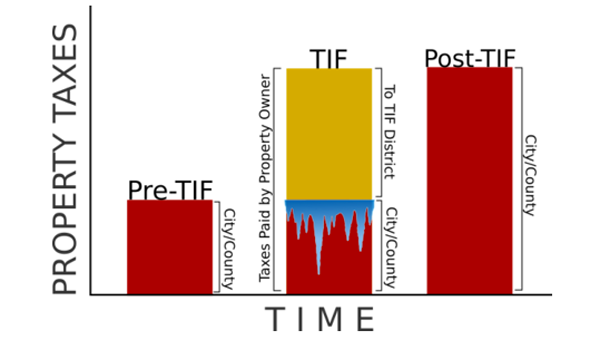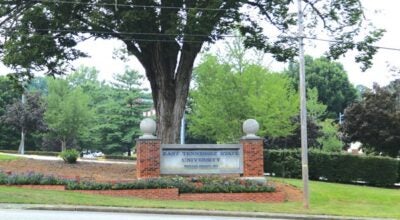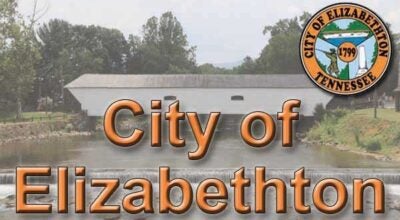City’s website page geared to educate public on pending West Elk development plans
Published 9:33 am Thursday, November 19, 2015
For those interested in learning more about tax increment financing districts in the community and how they could impact its economic future, the City of Elizabethton has dedicated a page on its website to education about the functions TIF districts including pending plans.
This page includes tabs answering frequently asked questions, information about the development of a TIF from public finance guru Mark Mamantov, and, perhaps most relevant to locals, the redevelopment proposal for a 330-acre West Elk Avenue development area.
The site is accessible at www.elizabethton.org/TIF/ and includes a video from the public meeting in which Mamantov and Lynn Tully, Kingsport’s director of development services, spoke on the process of allowing TIF as well as progress in Kingsport.
“The next step is to make sure the members of the City Council and County Commission are educated and comfortable with TIFs so that we can develop policy to accept TIF projects and adopt the redevelopment plan,” said Elizabethton Director of Planning and Development Jon Hartman. “The policy will outline the conditions of TIF projects like the number to employ and building value requirements because obviously we wouldn’t grant them for every project.”
He said the major parties to educate about TIF are the commission, council, housing authority, industrial development bond board and local banks, as they would be the major lenders to developers.
Carter County Tomorrow and the City of Elizabethton chose a team in 2014 to conduct a market analysis, explore potential land use scenarios, forecast the future tax base (based on the land use scenarios) and prepare a conceptual master plan for the development of this area.
Parsons Brinckerhoff, along with Dan and Ruth Hawk, have since completed this research and have enumerated their results with images, graphs and descriptions of the area’s potential.
These studies include analysis of residential market conditions that are predicted to increase by 40 to 50 households annually through 2040 with a trend toward more people living in multifamily residential areas. Currently, the study shows that of five existing multifamily housing establishments, including two in Johnson City, average occupancy is 93 percent.
“Using TIFs can help us provide multifamily living facilities, giving us a tool to increase the number of people that live close and making it an appealing area to move into,” said Hartman.
He noted how the creation of market-rate multifamily housing in Kingsport raised the bar for living standards in the area and welcomed in a certain demographic.
“It is key to understand that multifamily housing development can range from high-end loft style units to Section Eight housing, so it’s important to understand and incorporate the type of housing we want,” he said. “We have to be careful to balance current standards and to know whether to develop various types of multi-family living or single-family living based on needs and goals.”
The study also reveals an increase in vacancy of office space from less than five percent in 2009 to almost 25 percent in 2014. Vacancy in retail marketplaces has remained at about a steady 18 percent since 2011.
Hartman said that by building appropriate housing to accommodate professionals, the city and county will create incentive for them to fill office and retail vacancy.
“More people residing nearby with higher incomes will drive that retail component,” he said.
Large scale vacancies include the old Walmart site, Betsytowne Shopping Center, and some vacancy at the Shoppes on Elk as well as in Franklin Square.
“The master plan calls for a majority of the area that is undeveloped to be developed and then some of the existing industrial areas to be redeveloped,” said Hartman. “If it’s already developed, we’re looking at redeveloping it — it just depends on what kind of projects we get,” he said.
He said he has two developers interested in the West Elk district right now if local officials agree to create policy allowing the use of TIF.
“If I said we are now accepting TIFs, I have one gentleman that is willing to buy vacant property, and another said he is willing to develop an entire property,” he said. “We already have people that are very interested in using our product.”
As for the other parcels, he said they will have to be outgoing to developers in selling their product.
“If they see an opportunity to make money, they’re going to do it, and I think that a TIF is just that tool to allow them help with stormwater, streets, roads and environmental mitigation,” he said. “People will see that we are investing and want to see growth, and it’s an opportunity for them to not have to pay for those changes so they can make money to come in and do this project. It’s an incentive program in which we already have developers interested, and I think that we will have plenty more.”
Conducting the market analysis helps to determine short- and long-term goals, to whom marketing should be directed and how.
In its conclusion, the study found, that because of limited growth in local market, large-scale development would need a major catalyst to drive demand. To accomplish this, the use of TIF districts, tax abatements, land assemblage and streamlined approval process are suggested tools.
The master plan’s residential suggestions include the development of independent living units to accommodate an increasing elderly population. This would complement the new assisted living facility, walking trails, outdoor spaces and medical facilities. It also suggests targeting young professionals with employment opportunities and living facilities with commons areas, wi-fi connectivity, lounges and social opportunities.
Due to healthy regional tourism opportunities and the age of the two existing hotels, the study proposes the addition of two new hotels on the southwest side along West Elk Avenue as short-term goals.
A hotel and conference site is proposed for the old Walmart site.
The study found long-term potential for office and retail development because of the currently weak market conditions. It suggests the occupation of vacant spaces by smaller-scale offices targeted at the public sector, education and health care.
Finally, on a land map highlighted by current occupancy, visitors to the site can clearly see the uses of the land as it is now and in the future according to the master plan. The plan includes the addition of bike and walking trails, as these are strong incentives for developers and residents, and they coincide with the location along the Watauga River and nearby parks and existing trails.
“It’s one of those things where if you build it they will come,” said Hartman.






